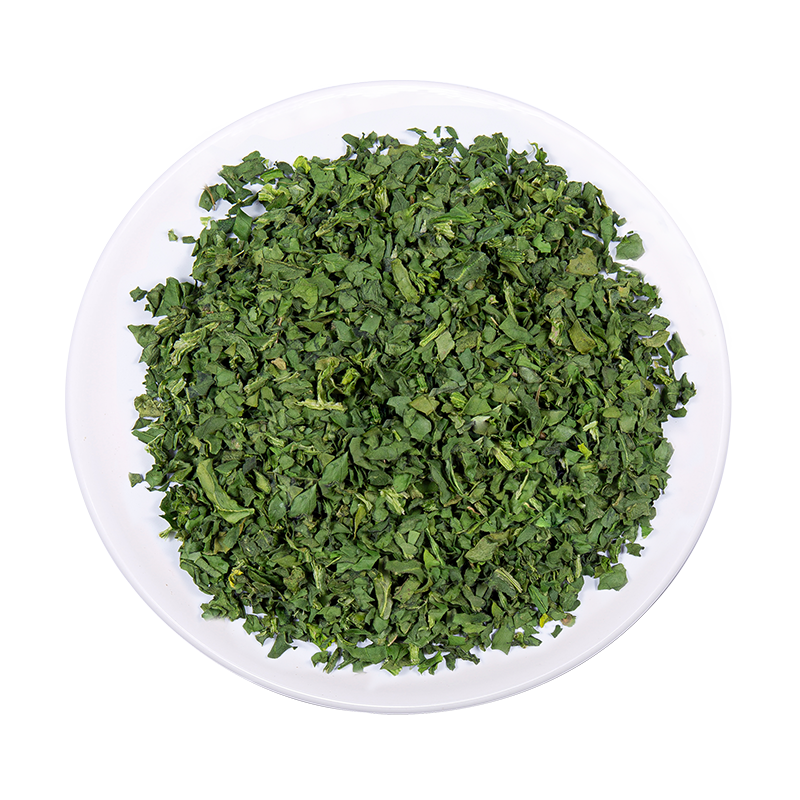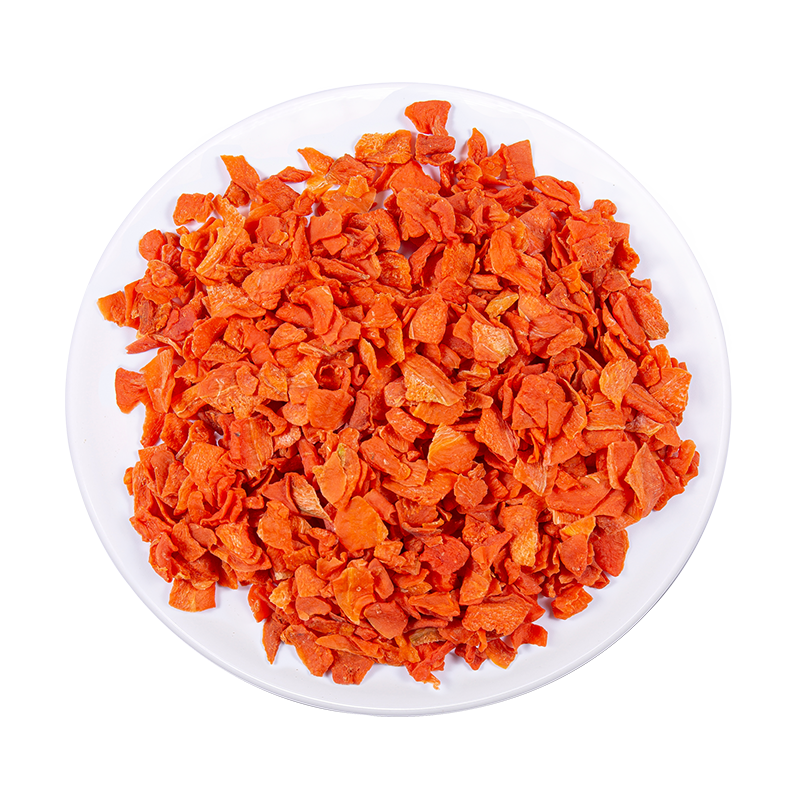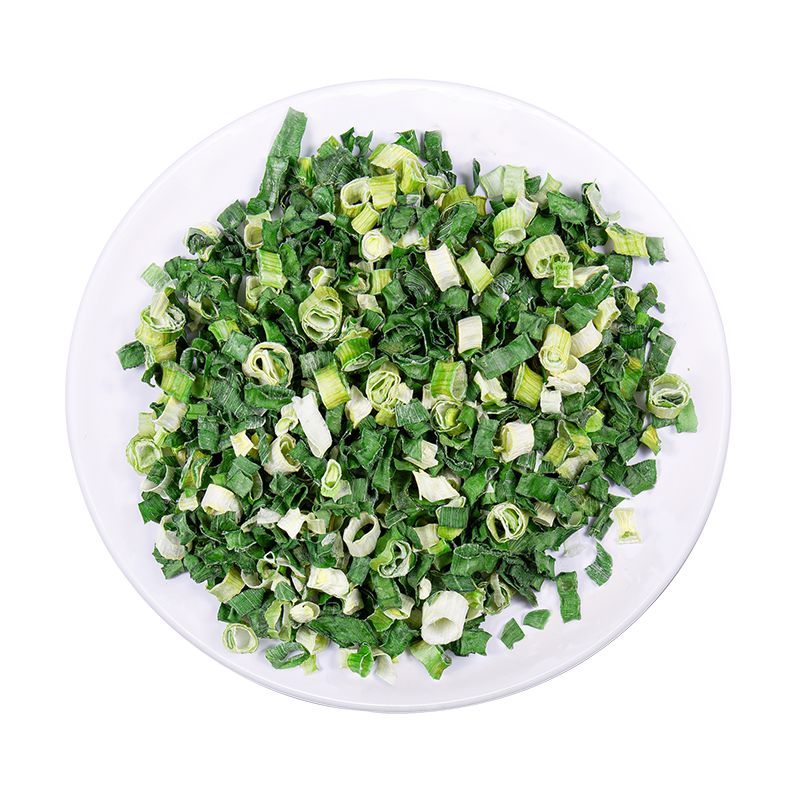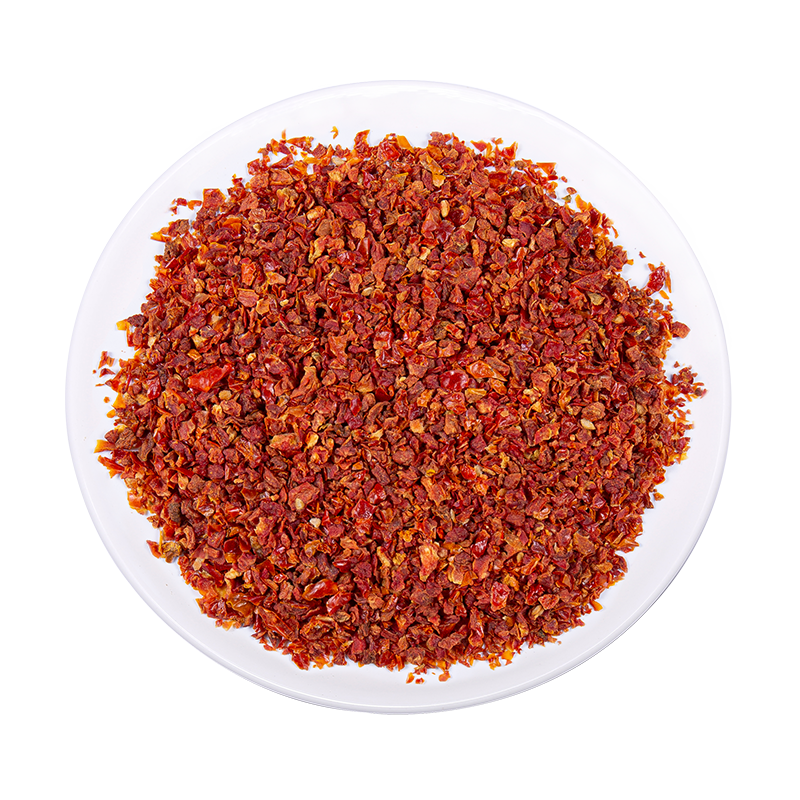Dec 09,2025
Rehydration Rate
The rehydration process of Dehydrated Chinese Cabbage is significantly influenced by its size and cut, which directly affect how efficiently water is absorbed and how quickly the cabbage regains its original texture.
-
Shredded or Chopped Cabbage: Dehydrated cabbage that has been shredded or chopped into smaller pieces typically rehydrates much faster than whole or large chunks of cabbage. This is because smaller pieces expose a larger surface area to the rehydration liquid, allowing for faster water absorption. As a result, shredded or chopped cabbage will usually return to its hydrated state within a few minutes—typically 5 to 10 minutes—depending on the temperature and amount of water used. This quick rehydration process is ideal for recipes that require fast cooking times or need to integrate the cabbage seamlessly into the dish, such as soups, sauces, or stir-fries.
-
Whole Leaves or Larger Chunks: Whole leaves or larger cuts of dehydrated cabbage have a significantly smaller exposed surface area relative to their volume. This means they require more time to absorb moisture, resulting in a longer rehydration period. Depending on the thickness of the cabbage, it could take anywhere from 20 to 40 minutes for the cabbage to fully rehydrate, particularly if the pieces are large. This extended rehydration time is important for dishes that benefit from slow cooking or where larger pieces of cabbage are required for texture and appearance, such as in braised dishes or stuffed cabbage rolls.
Texture and Consistency
The texture of rehydrated cabbage plays a key role in how it integrates with other ingredients and the overall eating experience. The cut size impacts how well the cabbage regains its original structure after rehydration, which influences its final texture and mouthfeel.
-
Shredded or Finely Chopped Cabbage: When dehydrated and rehydrated, shredded or finely chopped cabbage usually retains a uniform texture similar to that of fresh cabbage. This is particularly beneficial in dishes where the cabbage is used as a soft filler or a component that needs to blend with other ingredients smoothly. The smaller cut ensures the cabbage is evenly hydrated and integrates easily into recipes, providing a consistent texture that mimics the mouthfeel of fresh cabbage. This makes it ideal for use in dishes like stir-fries, noodle bowls, and soups, where uniformity and quick cooking are essential.
-
Whole Leaves or Larger Chunks: Larger cuts of dehydrated cabbage typically maintain a more fibrous and hearty texture once rehydrated, which may appeal to those who prefer cabbage with more bite. However, the larger size can also result in uneven rehydration, with thicker parts of the cabbage taking longer to soften than thinner edges. This can lead to a chewy texture in the rehydrated product, which may not be ideal for quick-cooking recipes but is perfect for applications that benefit from a substantial texture, such as in slow-braised dishes or cabbage rolls, where the cabbage retains more of its integrity throughout the cooking process.
Cooking Performance and Integration
The rehydration characteristics influenced by the cut size also have a direct impact on how well Dehydrated Chinese Cabbage integrates into the cooking process, particularly regarding cooking time, heat distribution, and texture consistency.
-
Shredded or Chopped Cabbage: Once rehydrated, shredded or finely chopped cabbage is much more manageable and integrates quickly into a dish. Its smaller size allows for more even cooking, making it ideal for stir-fries or dishes that require fast cooking, as the cabbage can absorb heat quickly. Shredded cabbage also mixes easily with other ingredients, taking on the flavors of sauces or seasonings faster. In soups, sauces, or noodle dishes, shredded cabbage will be ready to absorb the surrounding flavors in a shorter amount of time, ensuring it doesn’t overpower the dish but rather blends seamlessly with the other components.
-
Whole Leaves or Larger Chunks: Larger cuts of dehydrated cabbage tend to retain their structure better during the cooking process, making them more suitable for recipes where the cabbage’s integrity is important. This makes whole leaves or large chunks perfect for stuffed dishes like cabbage rolls, or for use in slow-cooked stews and braised meals where cabbage is simmered for long periods. The larger pieces require more time to soften and may need to be cooked at a lower temperature for a longer period to achieve the desired tenderness. These pieces also provide a substantial texture in the final dish, offering a hearty bite that is appreciated in certain cuisines.
Flavor Absorption
The ability of Dehydrated Chinese Cabbage to absorb flavors from the surrounding ingredients is significantly influenced by the size and cut of the cabbage, which impacts both rehydration and cooking.
-
Shredded or Chopped Cabbage: Smaller pieces of cabbage tend to absorb flavors from broths, sauces, or spices more rapidly than larger cuts. The greater surface area of shredded cabbage ensures that it soaks up seasoning and sauces efficiently, allowing the cabbage to become more flavorful in a shorter amount of time. This is particularly advantageous in quick-cooking dishes like stir-fries or soups, where the cabbage needs to absorb and enhance the flavors of the liquid it is cooked in. The absorption rate is faster, and the flavors blend more uniformly into the cabbage.
-
Whole Leaves or Larger Chunks: Larger pieces of cabbage generally have a more resilient flavor profile and do not absorb as much of the surrounding liquid or seasoning as quickly as smaller cuts. While this may result in a more distinct, cabbage-forward flavor, it also means that the cabbage is less likely to blend completely with sauces or broths. This can be beneficial in applications where cabbage is meant to be served as a whole component, such as in stuffed cabbage rolls, where the cabbage’s natural taste and texture remain central to the dish.
Suitability for Specific Dishes
The choice of cut and size of Dehydrated Chinese Cabbage can greatly influence its suitability for particular types of dishes, depending on the desired outcome in terms of texture, cooking time, and presentation.
-
Shredded or Chopped Cabbage: This form of dehydrated cabbage is versatile and can be used in a variety of dishes, especially those that require quick integration and fast cooking. Shredded cabbage is ideal for applications where uniform texture and even cooking are important, such as soups, noodle dishes, spring rolls, and salads. It can also be used as a filler in dumplings or as an ingredient in stir-fries, providing both texture and a mild flavor that complements the other components of the dish.
-
Whole Leaves or Larger Chunks: Larger cuts of cabbage are often used in dishes that showcase cabbage as a central component, such as stuffed cabbage rolls, roasted cabbage, and braised cabbage dishes. In these applications, the cabbage is not only providing flavor but also acting as a substantial element in the dish’s overall structure. The larger cuts retain their shape and texture when cooked, making them perfect for slow-braising, roasting, or stuffing. These dishes typically allow the cabbage to soften over time, releasing its natural flavors while maintaining a hearty texture.


 English
English Français
Français Español
Español









